Spiders are eight-legged arachnids that belong to the same class as mites, ticks, and scorpions. They are found all over the world and come in a variety of shapes and sizes, ranging from tiny spiders that are only a few millimeters long to large tarantulas with a leg span of up to 10 inches.
Spiders are known for their ability to spin silk, which they use to create webs for catching prey, to protect their eggs, and to move around. They have two body parts – the cephalothorax (head and thorax fused together) and the abdomen – and they breathe through a series of small openings called spiracles.
Most spiders are carnivores and feed on insects and other small creatures. They have specialized mouthparts called chelicerae, which they use to inject venom into their prey. The venom not only paralyzes the prey but also begins the process of digestion.
While some spiders are venomous to humans, most are harmless and play an important role in controlling insect populations. Spider bites are generally not dangerous unless the victim is allergic to the venom or the spider is one of the few species that pose a threat to humans.
1. Chemical sprays: BugPro Termite and Pest Control Technicians use chemical sprays, like insecticides or pesticides, to kill or repel spiders from homes or buildings. They spray the chemicals in the infested areas or spray the spider directly.
2. Dusting: BugPro Termite and Pest Control Technicians might also use dusting, which involves applying insecticide powder into the infested areas or directly onto the spider.
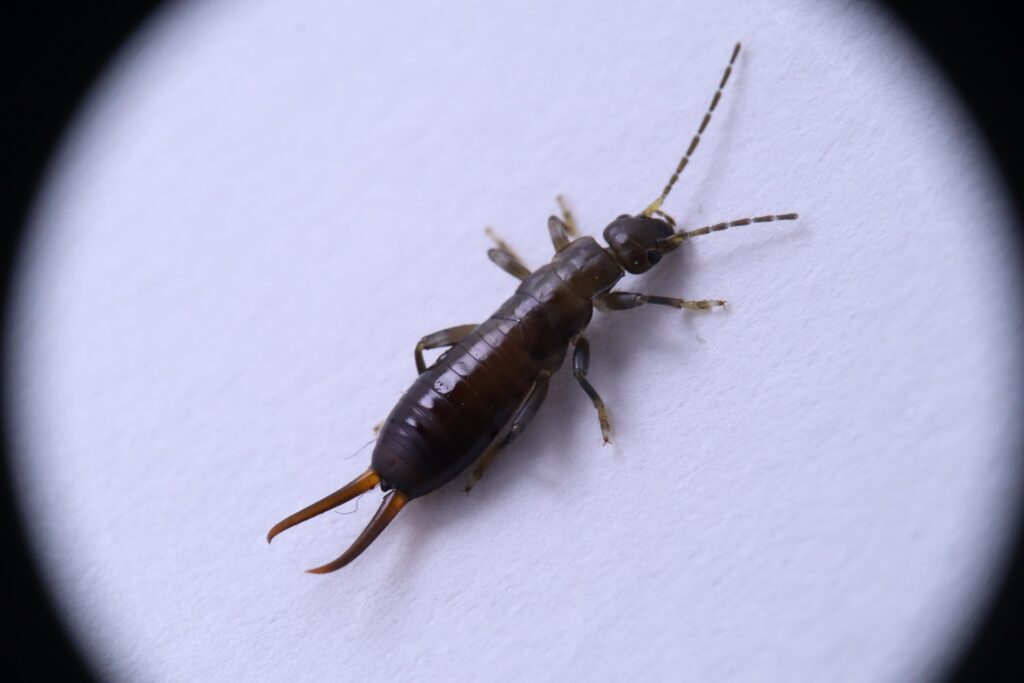
Earwigs are a type of insects that belong to the Dermaptera order. They have elongated, flattened bodies and a pair of pincers called cerci at the end of their abdomen. The name “earwig” comes from the myth that these insects crawl into the ears of humans and lay their eggs, but this is not true.
Earwigs are found throughout the world, and there are around 2,000 different species. They are attracted to damp environments, such as under rocks, in crevices, and in soil. They are mostly active at night and feed on plants, insects, and other small invertebrates.
Despite their reputation as pests, earwigs are beneficial to gardens as they prey on aphids and other harmful insect pests. However, they can also damage plants by eating leaves and flowers.
Earwigs are not dangerous to humans, and their pincers are mostly used for defense and mating purposes. Some species of earwigs can emit a foul-smelling liquid as a defense mechanism.
Control of earwigs can be done by removing their hiding places and keeping the surrounding areas dry. Insecticides can also be used if necessary.
1. Identify the infestation: Before treatment, it’s important to confirm that earwigs are the cause of the problem.
2. Remove shelter: Earwigs like to hide in dark, damp places during the day, so removing any items in your home that offer such conditions, such as logs or mulch, can help prevent or lessen the infestation.
3. Use insecticides: BugPro Termite and Pest Control technicians use insecticide that specifically target earwigs.
4. Seal cracks and holes: Earwigs can enter your home through small openings. Seal or caulk all cracks and gaps around windows, doors, and foundation walls to keep them out.
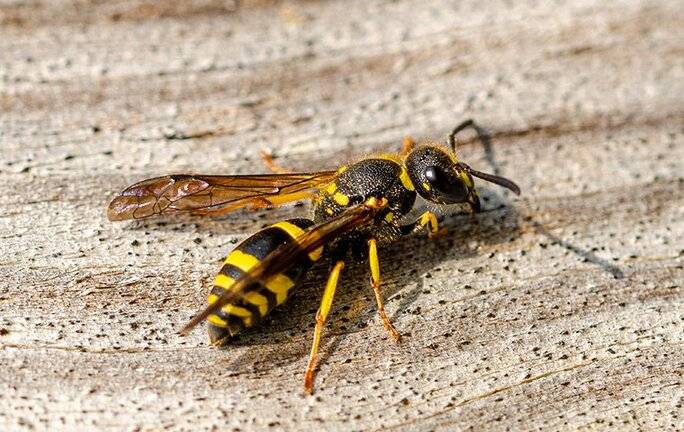
A wasp is a type of insect in the order Hymenoptera and suborder Apocrita, which includes ants and bees. They have slender bodies, narrow waists, wings, and often have bright colors such as black, yellow, or red. Wasps are known for their ability to sting, which they use for defense and to subdue their prey. Some species are also important pollinators and play a crucial role in controlling insect populations. They can be found all over the world and are diverse in their size, behavior, and habitat.
1. Respect their territory: Wasps are territorial and will defend their nests when they feel threatened. Avoid going near their nests, especially when you are not protected.
2. Wear protective clothing: If you need to remove a wasp nest or deal with a wasp infestation, wear protective clothing, including a bee suit, long-sleeved shirts, pants, and gloves. This will protect you from stings.
3. Treat them with insecticides: Insecticides can help eliminate wasp infestations. If you are not sure about the best product to use, consult with a professional pest control company.
4. Trap them: You can use traps to capture and remove individual wasps. However, do not attempt to trap a whole nest because it will likely result in an attack.
5. Seek professional help: If you cannot handle a wasp infestation on your own call BugPro Termite and Pest Control we have the expertise and experience to handle wasp infestations safely and effectively.
Visit OC Bee Guy for more info.
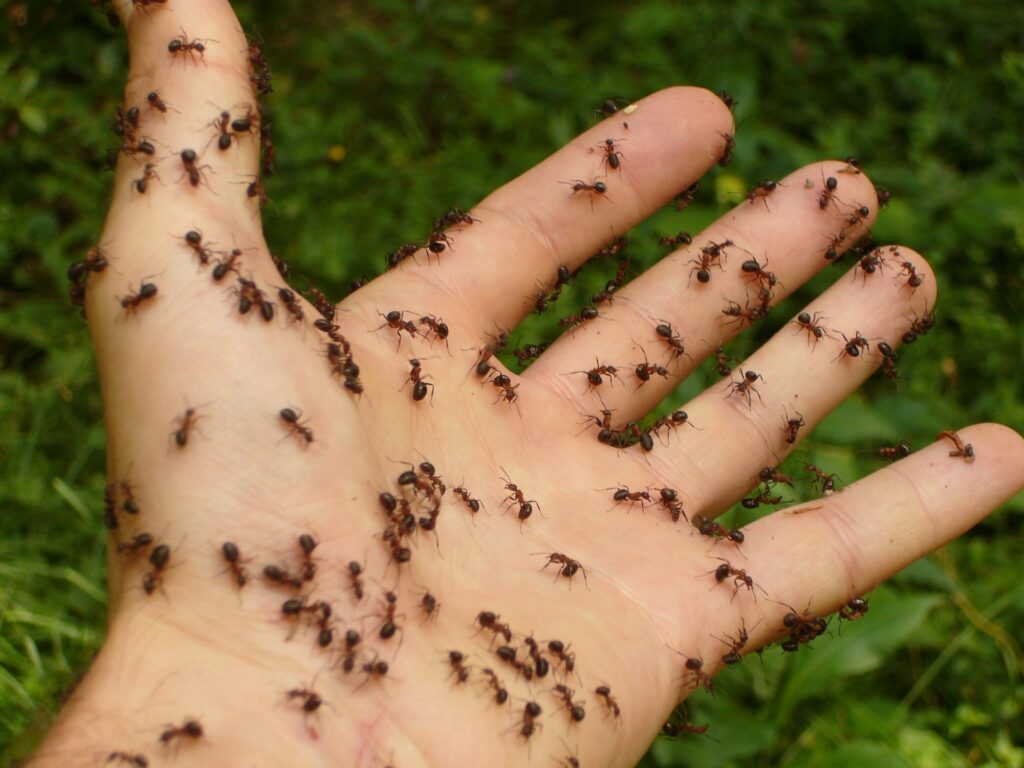
Ants are social insects that belong to the family Formicidae, which includes over 12,000 known species. They are found almost everywhere in the world, except for Antarctica and a few isolated islands. Ants are known for their highly organized and cooperative social behavior, which revolves around their queen, who is responsible for laying all the eggs in the colony.
The other ants in the colony have specific roles, such as foraging for food, caring for the young, and defending the nest. Ants communicate with each other using pheromones, which are chemical signals that help them coordinate their activities. Some species of ants are known for their impressive feats of strength, such as leafcutter ants, which can carry objects up to 50 times their body weight. Ants are also important for the ecosystem, as they play a crucial role in pollination, nutrient cycling, and controlling other insect populations.
1. Inspection: First things first. Professional ant treatment starts with a thorough inspection of your home or office. A pest control specialist will inspect your property to identify the type of ant you’re dealing with and locate the source of the infestation.
2. Baiting: Baits are a popular and effective method of controlling ant infestations. A bait is simply a piece of food that contains a slow-acting insecticide. Ants will carry the bait back to their nests, spreading the poison throughout the colony.
3. Dusting: If ants are found in the walls, cracks or crevices, professionals may use dusting as a pest control method. Dusting involves applying insecticide to these areas.
4. Spraying: BugPro Termite and Pest Control Technicians may also spray insecticides inside the perimeter of your house or office building. The insecticide used in this method is usually pyrethrum, which is derived from chrysanthemum flowers.
5. Colony Elimination: In the case of larger infestations or colonies in hard-to-reach areas, colony elimination may be necessary. This involves using special baits, dusts and sprays to target the entire colony.
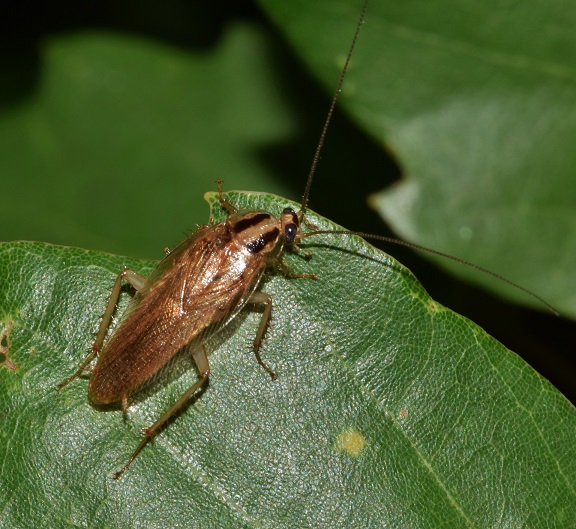
Roaches are insects that belong to the Blattodea order. They are typically found in moist environments such as kitchens, bathrooms, and basements. Roaches are nocturnal creatures and are attracted to food and moisture. They have flattened bodies, long antennae, and are about 1-2 inches in length. Roaches can carry disease and can trigger allergy and asthma symptoms in some people. There are several species of roaches, including German, American, and Oriental roaches.
1. Identify the problem: Proper identification of the pest is critical before treatment as different types of cockroaches require different control strategies. German cockroaches are small, light brown in color, have two stripes running from head to wing and prefer warm, moist environments.
2. Sanitation: Proper sanitation is vital for German cockroach control. Clean up food spills, and crumbs, seal trash cans and clean sink drains, wipe down surfaces and keep everything dry to to reduce food sources and harborages.
3. Insecticides: Chemical control is the most effective way of getting rid of German roaches. Professional pest control companies use a variety of chemicals in different formulations, such as baits, dusts, and sprays, to manage cockroach populations.
4. Maintenance: Regular maintenance is essential to keep control over any pest infestation. Continual treatment and prevention, including ongoing sanitation will prevent cockroach populations from rising again.
5. Professional help: Professional pest control services can provide a customized solution for each specific German roach infestation. They will provide effective, long-term solutions for eliminating German cockroaches.

Bedbugs are small, brownish-red insects that feed on the blood of humans and animals. They are about the size of an apple seed and can hide in cracks and crevices, such as in mattresses, upholstered furniture, and wallpaper. Bedbugs are mostly active at night and can cause bites that lead to itching and swelling. They do not transmit diseases, but their presence can cause anxiety and stress. Bedbugs can be difficult to get rid of and often require professional pest control services.
1. Inspection: A thorough inspection of the entire property is conducted to locate the areas of infestation. This will help to identify the extent of the problem and allow the professionals to decide on the most effective treatment plan.
2. Heat treatment: Heat treatment is one of the most effective methods of treating bedbugs. The temperature is raised to a level that is lethal to bedbugs, which typically ranges from 120 to 140 degrees Fahrenheit.
3. Pesticides: Pesticides are another common method of treating bedbugs. A variety of chemicals are used, including pyrethroids, neonicotinoids, and insect growth regulators.
4. Vacuuming: Professionals will use a high-powered vacuum cleaner to remove as many bedbugs, eggs, and larvae as possible. This will help to reduce the total number of insects in the area.
5. Encasements: Mattress and box spring encasements effectively isolate bedbugs and prevent them from feeding.
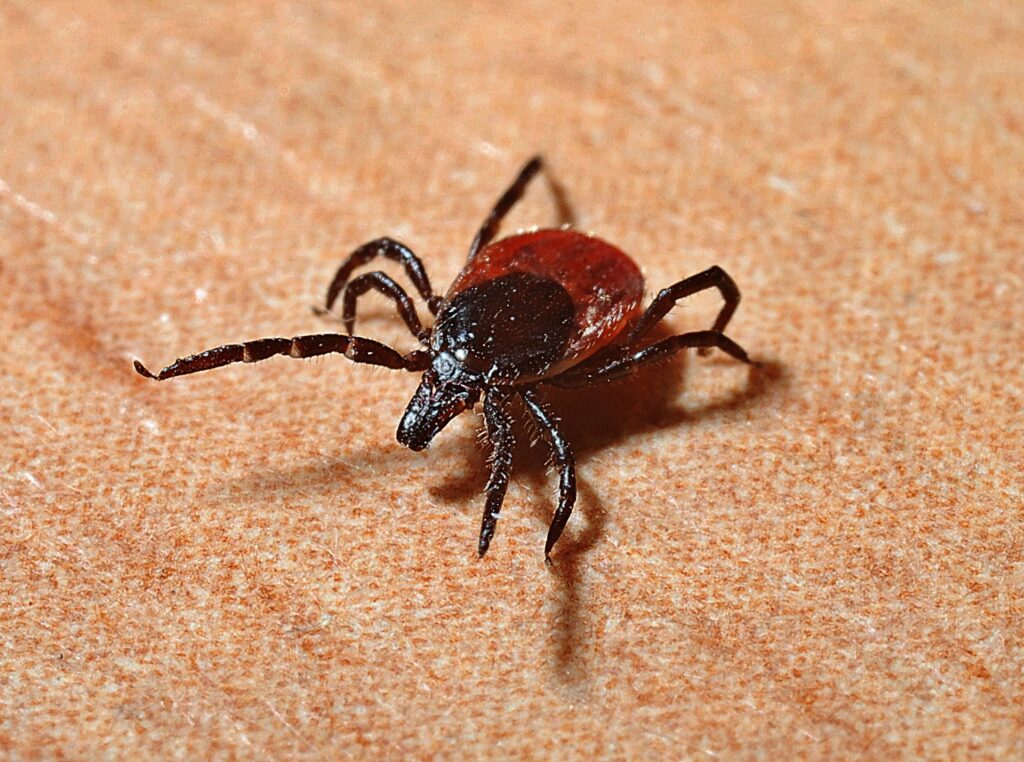
Mites are tiny arthropods that belong to the class Arachnida, which includes spiders, scorpions, and ticks. They are usually less than 1 millimeter in size and can be found in various habitats, including soil, water, and animals, as well as on plants and in human homes.
There are many different types of mites, with different species having different diets and lifestyles. Some mites feed on dead skin cells, while others feed on other mites, insects, or plant material. Some species of mites are beneficial to humans, while others can cause serious harm.
Certain mites can cause allergies, asthma, and skin diseases in humans, such as scabies and demodex mites. Others can infest crops and cause economic damage to agriculture. Some mites are used in biological control, aiding in the control of pests and invasive species.
1. Inspection – BugPro professional will inspect your property inside and outside to identify areas where ticks/mites might be hiding or breeding. They will have a particular focus on areas with tall grass, leaf litter, or any other warm, moist environments where ticks are most likely to be found.
2. Treatment – Depending on the extent of the infestation, BugPro Termite and Pest Control tech may use several methods to treat the area. Some popular forms of treatment include chemical sprays, foggers, and bait stations. The treatment product used may vary depending on the severity and the type of the tick problem. Technicians may also use techniques such as vacuuming, heat treatment, or steam cleaning to eradicate the pest.
3. Prevention – Once the treatment is complete, Inspector will recommend various strategies you can use to minimize the likelihood of a future tick infestation. These strategies might include keeping shrubs and grass trimmed, avoiding leaving standing water, and keeping pets treated with flea and tick preventative products.

Fleas are small, wingless insects that are parasites of various mammals and birds. They feed on the blood of their hosts and can cause skin irritation and allergic reactions. Fleas are commonly found on pets, especially cats and dogs, but can also infest homes and yards. They are known to be carriers of diseases such as typhus and plague, making flea control important for public health. Fleas have a life cycle that can be completed in as little as two weeks, so prompt treatment is necessary to prevent infestations.
1. Inspection: BugPro Termite and Pest Control tech will first inspect the affected areas of your home to determine the level of infestation and identify the source.
2. Vacuum: vacuum to remove adult fleas, eggs, and larvae from carpets, furniture, and other surfaces.
3. Steam cleaning: steam to kill adult fleas and their eggs in carpets, furniture, and other areas.
4. Insecticides: BugPro Termite and Pest Control tech may use insecticides to kill fleas and their larvae in hard-to-reach areas such as cracks, crevices, and baseboards.
5. Repeat treatment: They may recommend a follow-up treatment after a certain period to ensure complete elimination of fleas.
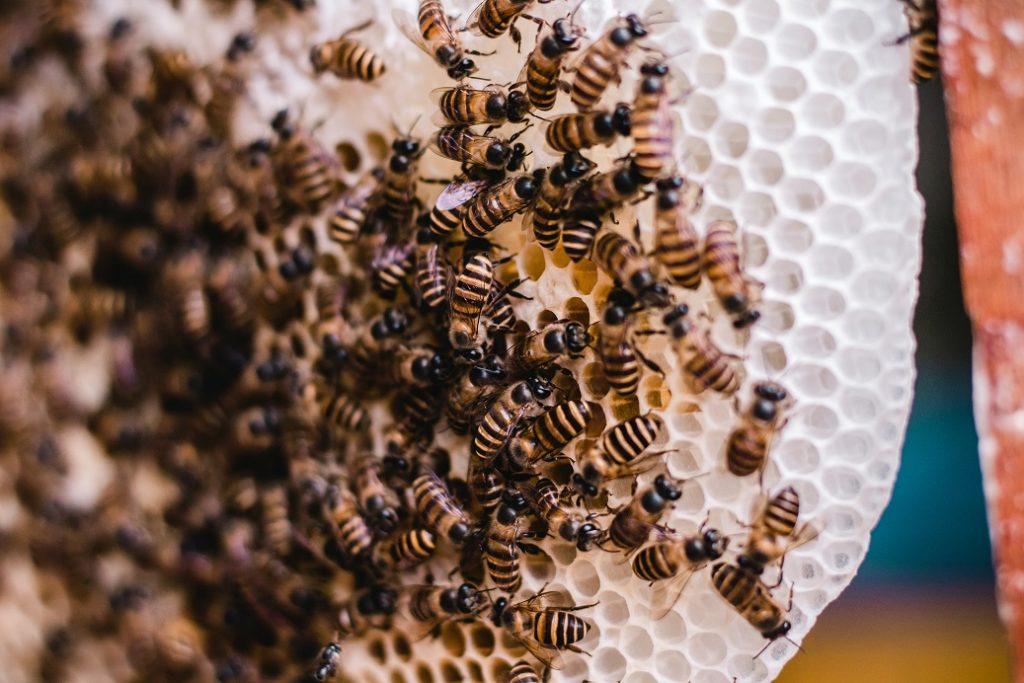
Bees are flying insects that are known for their role in pollinating flowers and producing honey. There are over 20,000 species of bees, with the most common being the honey bee. Bees are important for the environment, as they play a crucial role in pollinating crops and plants, which in turn benefits other wildlife and ecosystems.
Bees live in organized colonies, with a queen bee who is responsible for laying eggs, drones who mate with the queen, and worker bees who gather nectar and build and maintain the hive. Bees communicate with each other through a dance language known as the waggle dance, which helps them find food sources and navigate their way back to the hive.
1. Lack of knowledge: Owners may not have adequate knowledge and experience in handling bees. Bees can be dangerous if they feel threatened, and without proper protection and precautions, bees can sting them or their family members.
2. Legal concerns: Depending on the location, some species of bees may be protected, making it illegal for individuals to harm or destroy them. If the owner accidentally causes harm to protected bees, they may face legal consequences.
3. Health risks: Some bee infestations can lead to allergic reactions, especially if anyone in the household has allergies or a history of severe allergic reactions. If someone is allergic to bees, it is highly recommended to contact a professional to handle the issue.
4. Risk of property damage: Attempting to remove a bee infestation without proper tools or knowledge can lead to further damage to the property, including structural damage to walls, ceilings, or other areas where the bees have built their nests.
5. Time-consuming: Removing a bee infestation can be a time-consuming process, requiring patience and specialized equipment. An owner may not have the necessary time to dedicate to safely removing the bees, which could lead to a failed attempt and put everyone in danger.
Visit OC Bee Guy for more info.